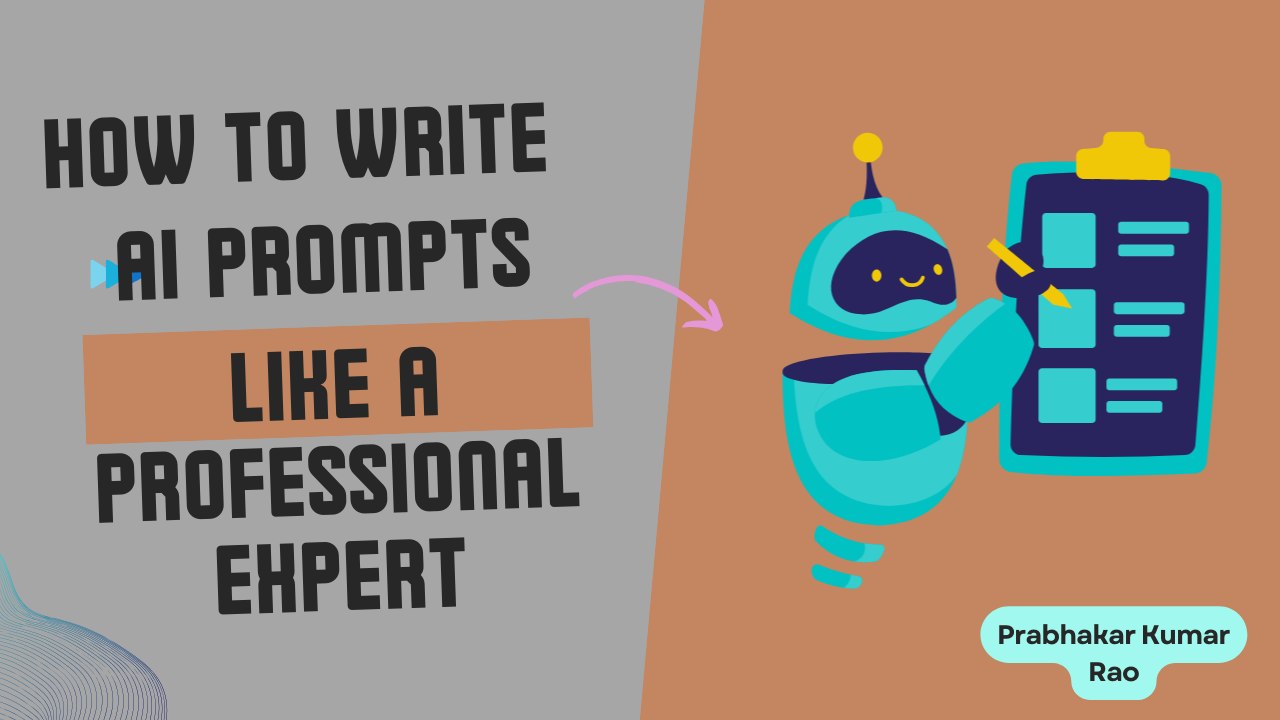In the rapidly evolving world of artificial intelligence (AI), the ability to craft effective AI prompts is a precious skill. Whether you’re engaging with AI for creative writing, coding assistance, or customer support, the quality of your prompts directly influences the AI’s output. This guide will teach you how to write prompts like a professional AI expert, ensuring you get the most out of your AI interactions.
Understanding AI Prompts
What Are AI Prompts?
AI prompts are inputs given to AI systems to generate specific outputs. They guide the AI in producing relevant and accurate responses based on the provided context.
Types of AI Prompts
- Text Generation: Creating stories, articles, or other written content.
- Question-Answering: Seeking specific information or clarifications.
- Code Completion: Assisting in writing or completing code snippets.
The Basics of Effective Prompt Writing

Clarity
Ensure your prompt is clear and straightforward. Ambiguity can lead to confusing or irrelevant AI outputs.
Specificity
Be specific about the desired outcome. Vague prompts often result in generalized and less useful responses.
Context
Provide sufficient context to help the AI understand the task at hand. The more context you give, the better the AI can tailor its response.
Techniques for Crafting High-Quality Prompts
Using Examples
Including examples of desired outputs helps the AI understand what you expect. For instance:
Prompt: “Write a short story about a hero saving a city.” Example: “Once upon a time, in a bustling city, a brave hero emerged from the shadows to protect its inhabitants from danger.”
Instructional Language
Use clear and direct instructions. For example:
Prompt: “Explain the concept of gravity to a 10-year-old.”
Role Play
Assign the AI a specific role to guide its responses. For example:
Prompt: “As a history professor, explain the causes of World War II.”
Common Pitfalls to Avoid
Vague Prompts
Avoid being too general. Specificity is key.
Example of a Vague Prompt: “Tell me about space.” Improved Prompt: “Describe the key characteristics of black holes in space.”
Overcomplication
Keep your prompts simple and focused. Overly complex prompts can confuse the AI.
Ambiguity
Ensure there is no room for misinterpretation. Clear and concise language is essential.
Advanced Prompt Writing Strategies
Iterative Refinement
Test and refine your prompts through iterations. Adjust based on the AI’s responses to improve accuracy.
Feedback Incorporation
Use feedback from the AI’s outputs to tweak and enhance your prompts.
Leveraging AI Capabilities
Understand the strengths and limitations of the AI you’re working with. Tailor your prompts to maximize its capabilities.
Examples of Effective AI Prompts
Creative Writing
Prompt: “Write a poem about the beauty of autumn.”

Technical Support
Prompt: “Troubleshoot a common issue with Windows 10.”
Education
Prompt: “Explain the Pythagorean theorem with a simple example.”
Tools and Resources for Prompt Writing
AI Platforms and Tools
- OpenAI: Known for GPT-4, a powerful AI language model.
- GPT-3: Another robust AI tool for generating text.
- Dialogflow: Great for conversational AI.

Community Resources
- AI Forums: Engage with other prompt writers and AI enthusiasts.
- Blogs and Articles: Stay updated with the latest trends and tips in AI prompt writing.
Educational Resources
- Courses: Online courses on AI and prompt writing.
- Books: Read books focused on AI and machine learning.
Conclusion
Crafting effective AI prompts is an art that combines clarity, specificity, and context. By following the techniques and strategies outlined in this guide, you’ll be able to write prompts like a professional AI expert. Remember to continuously test, refine, and adapt your prompts to get the best results.
Additional Tips and Best Practices
Staying Updated
Keep up with the latest developments in AI. This field is constantly evolving, and staying informed will help you craft better prompts.
Experimentation
Don’t be afraid to experiment with different styles and approaches. The more you practice, the better you’ll become.
Collaboration
Engage with the AI community for feedback and improvement. Collaboration can lead to new insights and better prompts.
Frequently Asked Questions (FAQs)
What makes a good AI prompt?
A good AI prompt is clear, specific, and provides enough context for the AI to generate a relevant and accurate response.
How can I improve my AI prompts?
Continuously test and refine your prompts. Use feedback from the AI’s outputs to make adjustments.
What tools can help me write better AI prompts?
Platforms like OpenAI, GPT-3, and Dialogflow are excellent for crafting and testing AI prompts.





Pingback: Is AI Voice Beneficial for Content Creation? Best Explanation (2024) - RPMSNKHU Reviews